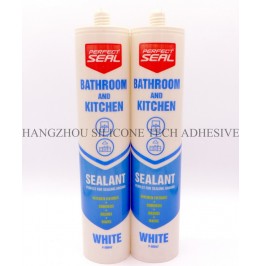Bathroom sealants are essential for preventing water damage, mold growth, and structural deterioration in wet environments. However, their effectiveness diminishes over time as chemical components degrade. Understanding how to inspect and verify the shelf life of bathroom sealants ensures reliable performance and avoids costly repairs. Below are detailed methods to assess sealant viability without relying on brand-specific information.

The first step in evaluating sealant shelf life involves examining the packaging and its seal. Manufacturers typically print expiration dates or production codes on containers, often near the base or under the label. These codes may follow standardized formats, such as “MM/YY” for month and year. If the date is illegible or missing, inspect the packaging for signs of tampering, such as broken seals, dents, or punctures. Exposure to air, moisture, or extreme temperatures during storage can accelerate chemical breakdown, rendering the sealant ineffective.
Container integrity also matters. Cracks or leaks in plastic tubes or cartridges suggest compromised storage conditions. For cartridges, check the nozzle for dried residue, which may indicate partial curing or contamination. Sealed, undamaged packaging with a clear expiration date is a positive indicator, while damaged or expired containers should be discarded to avoid application risks.
Even if the packaging appears intact, the sealant’s internal consistency may reveal its age. Over time, chemical components in sealants, such as polymers and solvents, can separate or harden. To test this, gently squeeze a small amount from the tube or cartridge onto a disposable surface. Fresh sealant should extrude smoothly, with a uniform texture and color. If the material crumbles, appears lumpy, or resists flow, it has likely degraded.
For multi-component sealants (e.g., two-part epoxies), check for proper mixing ratios. Discolored or uneven layers suggest separation, which compromises curing. Additionally, smell the sealant: a rancid or chemical odor may indicate spoilage. Always wear gloves during testing to avoid skin irritation from potentially reactive substances.
Before applying sealant to bathroom fixtures, conduct a trial on a scrap material or inconspicuous area. Apply a thin bead and observe its behavior. Fresh sealant should adhere promptly, forming a flexible, water-resistant layer. If it remains tacky, shrinks, or cracks after drying, it has exceeded its shelf life.
Curing time is another critical factor. Most sealants cure within 24–72 hours, but expired products may take significantly longer or fail to harden. Use a moisture meter to check if the sealant repels water as intended. Poor water resistance increases the risk of mold and structural damage in bathrooms.
Sealant longevity depends heavily on storage environment. Exposure to direct sunlight, high humidity, or freezing temperatures accelerates degradation. Ideally, sealants should be stored in a cool, dry place away from heat sources. Check the original packaging for storage recommendations, as some products require specific conditions to maintain efficacy.
If the sealant was stored improperly—such as in a damp garage or unheated shed—its shelf life may be shorter than stated. Even unopened containers can degrade if subjected to temperature fluctuations. When in doubt, prioritize safety and replace questionable sealants to ensure optimal bathroom protection.
Maintaining records of sealant purchases and usage helps manage shelf life proactively. Note the acquisition date and storage location for each container. For professional projects, use inventory software to track expiration dates and rotate stock. Homeowners can create a simple spreadsheet or label containers with purchase dates using permanent markers.
Regularly audit stored sealants, discarding any that are past their prime or show signs of degradation. This practice minimizes waste and ensures only reliable products are used in moisture-prone areas like bathrooms. By staying organized, you reduce the likelihood of applying expired sealants and facing subsequent repairs.
Copyright 2019 by Hangzhou Silicone Tech Adhesive Co., Ltd. All rights reserved.
Bathroom Sealant | Acrylic Sealant | Dow Corning 795 | Aquarium Sealant | Dow Corning 732 | Clear Silicone Sealant | Polysulfide Sealant | Glazing Sealant | Mirror Sealant | IG Sealant
Powered by Onepound